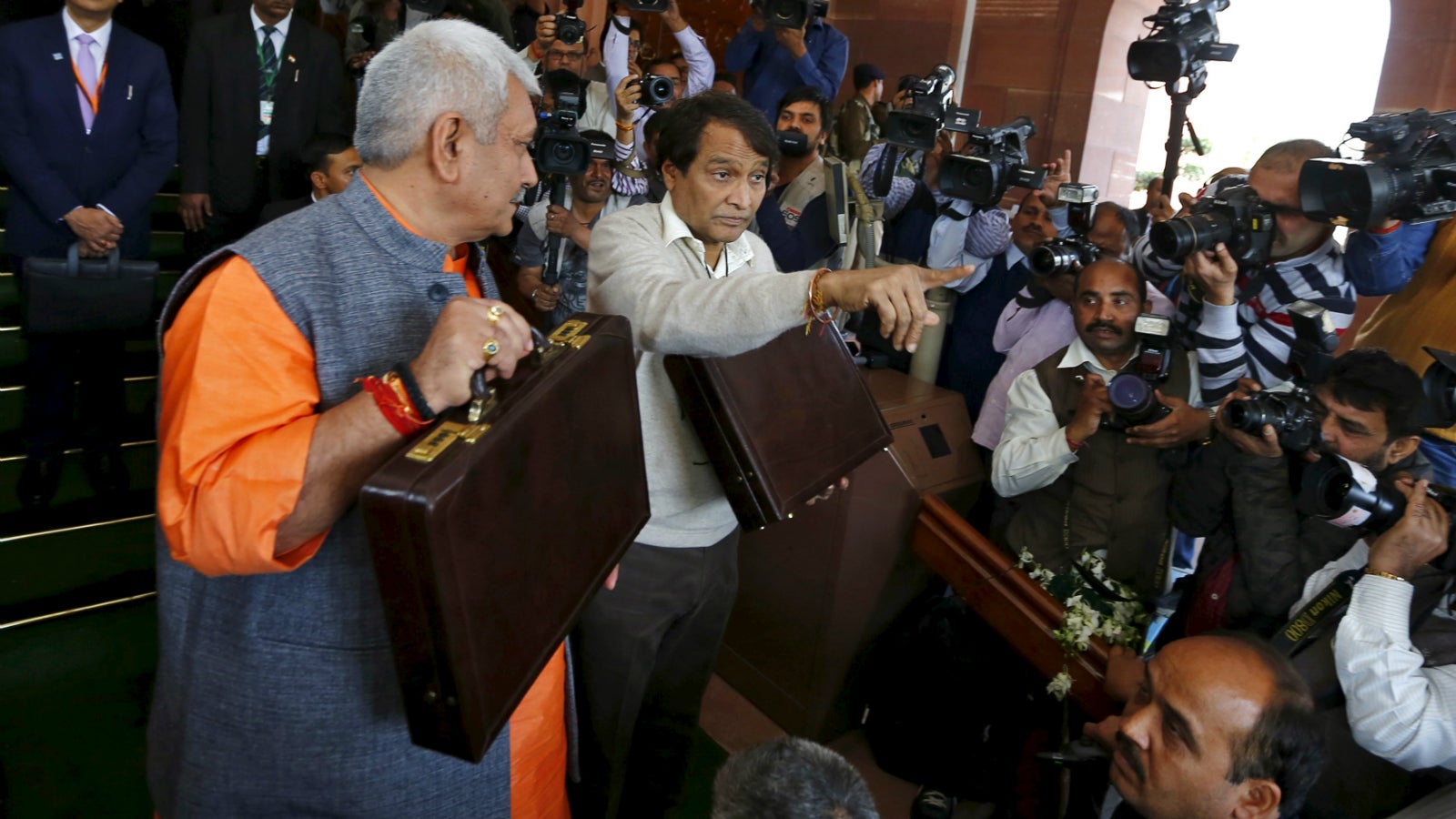Suresh Prabhu, nice speech. Now, show us the money!
India’s railway minister Suresh Prabhu today (Feb. 25) announced an ambitious blueprint for one of the world’s largest transportation systems.


India’s railway minister Suresh Prabhu today (Feb. 25) announced an ambitious blueprint for one of the world’s largest transportation systems.
In his second budget since taking over the ministry, Prabhu outlined his plans for reviving the railways’ flagging freight business, streamlining the network’s internal processes and administration, improving passenger amenities and bolstering critical suburban transportation systems.
In all, there is a capital expenditure plan of Rs1.21 lakh crore ($17.6 billion) for the coming financial year, significantly more than the Rs48,100 crore ($7 billion) that the railways have spent on an average every year between 2009 and 2014. Some of this money will come from Indian Railways’ deal with the Life Insurance Corporation of India (LIC), which will provide Rs1.5 lakh crore ($21.9 billion) to the state-owned transport network over the next five years.
The minister also expects to raise funds from non-tariff sources, including station redevelopment, land monetisation and advertising. A better-run railways will also ensure some savings, which Prabhu can then divert into new investments.
However, with no immediate tariff increases, a key question remains: Where will Prabhu get all the money he needs to implement his big plans for Indian Railways?
“Money is a big problem,” Vishwas Udgirkar, partner at Deloitte Consulting told Quartz. “If you look at the capital expenditure plan this year, there will be a substantial shortage in terms of funding. The railways have an internal savings of about Rs10,000 crore ($1.46 billion), the government will provide Rs40,000 crore ($5.4 billion) through budgetary support and the LIC could also provide around Rs40,000 crore ($5.4 billion). Even then, there is a shortage.”
Fixing the freight
In his budget speech last year, Prabhu laid much emphasis on improving the railways’ fortune from freight earnings. But, in 2015, he was left disappointed due to low demand from the manufacturing sector.
Nonetheless, the chartered accountant-turned-politician has decided to take another shot at improving the freight earnings—the main cash cow for Indian Railways. “The modal share of Indian Railways has been consistently declining over a long period of time,” Prabhu said in his speech. “This trend has had a negative impact not only on the railways but on the entire economy. We are determined to reverse this slide.”
So, it plans to expand its current freight basket, which primarily comprises 10 bulk commodities such as iron ore, coal and food grains. The move will help increase volumes and in turn, revenues. The government will also start time-tabled freight container trains and special commodity trains on a pilot basis to woo more customers.
Moreover, the railways will also undertake a review of its tariff policy after being out-priced in the freight market by road transport. This includes the “possibility of signing long-term tariff contracts with key freight customers using pre-determined price escalation principles.” The railways will also set up India’s first rail auto hub in Chennai to bring down the logistics costs for automakers.
“For years, we have been talking about freight, but nothing really has changed. This year too, there is stress on services such as opening up parcel and container segments,” Udgirkar said. “At least, the minister hasn’t deviated from the medium term plan he set out last year.”
Smooth operator
The railway minister also wants to re-organise and restructure the organisation, which could bring in more efficiency and sizeable savings.
“We will improve our efficiency yardsticks and procurement practices to bring them in line with international best practices. We will continue to innovate and optimise our outgo on each activity,” Prabhu said in his budget speech.
The railways will move all procedures for procurement to the e-platform. It is already experimenting a paperless contract management system where the entire process from inviting bids to awarding the tenders is conducted online. A trial run is underway, and Prabhu plans to extend it all over the country in the next financial year.
Every year, the railways deals with about 25,000 tenders with a total expenditure of over Rs35,000 crores for the maintenance of its massive network. All this is currently handled manually by some 10,000 railway officials and 20,000 bidders. By making the entire process electronic, Indian Railways can bring down the cost of procurement while also saving on time.
In the case of fuel, for instance, the railways is currently reviewing its procurement and distribution system, which could eventually save the network some Rs1,500 crore in 2016-17 alone, Prabhu said.
He also wants to realign the administration and has proposed to “reorganise the Railway Board along business lines.” This will help the railways to improve focus on areas such as public private partnerships and non-fare revenue generation, among others.
Alongside, the railways will redevelop stations in order to monetise land and buildings. It plans to lease land along railway tracks for commercial operations. This will increase the non-fare revenue share to between 10% and 20% of total earnings. Currently, this share is less than 5%.
“The proposal of generating 10-20% revenues from non-tariff sources predominantly through asset monetisation is a significant leap in revenue mobilisation endeavours,” Mukesh Butani, managing partner at BMR Legal, said in a note.